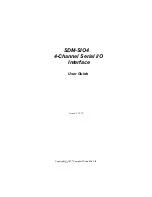
14
5.52.127.01.01.02
6.3
Installation on the beam
1 Tighten the hexagon nut (3) and safety nuts (4).
2 Push on the trolley at the face of the beam flange.
3 If this is not possible, the trolley can also be mounted
on the beam from below.
4 Therefore, remove the hexagon nut (3) and the safety
nut (4) on the side without gear.
5 Pull apart the side plates (1) as far until it is possible to
push the trolley onto the beam flange from below.
Afterwards, push the trolley together to correct gauge.
6 Secure the washers (6) and distance tubes (5) by
tightening the hexagon nuts (3) and the safety nuts (4).
Illustration 4
6.3.1
Bolt securing with collar
Securing the load bolts with set collars (1) and safety
screws (3).
In order to adjust the beam flange width dismantle
the safety screws (3) at one trolley side.
After adjustment of dimension "X" and installation on
the beam, install the safety screws (3) again and
secure them with a nut (4).
When pulling apart the side plates, the trolley drive
shaft will also be moved.
To do this, loosen the safety screws at the stern tube
bearing and secure them again after the side plates
have been pushed together.
Illustration 5
1 set
collar
2 load
bar
3 safety
screw
4 hexagon
nut
5 washer
CAUTION!
The distance “X” between the wheel flanges of the trolley wheels must be
for trolleys up to 3,2 t: 2-3 mm (1-1,5 mm each side) bigger and
for trolleys from 4 t up: 3-5 mm (1,5-2,5 mm each side) bigger than the flange width "B" of the beam
6.4 Pressure
roller
6.4.1
Units with a load capacity of up to 6,3 t
These units are fitted with adjustable pressure
rollers (1).
After assembly on the beam, adjust the
pressure roller (1).
The air gap between beam and pressure roller
(1) must be approx. 1-2 mm.
Tighten the screw and nut (2).
Illustration 6
1 Pressure
roller
2 Screw with nut.









































